Is there more to this plant than we think? Why is this plant illegal? What is the history of this plant’s path to prohibition?
Learn about the wonders of the marijuana/hemp plant in this wonderfully narrated short film.
Is there more to this plant than we think? Why is this plant illegal? What is the history of this plant’s path to prohibition?
Learn about the wonders of the marijuana/hemp plant in this wonderfully narrated short film.
Some time if you lucky once a year or two you go somewhere and you know that it last time was three years ago @ Achemy in Ubud with Shanti and then nothing , today i get it again , i knew the moment i look at it , it hit me the perfect place and by far from other small restaurant or coffee shop in Canggu and probably Bali .
then i meet Laura cute big smile shinny eyes what a beautiful Soul i could stay only 25mn but you did make my trip in Bali worth it this time i will be back and sample a lots of more vegan dishes next time Thank you for a beautiful day…. Eric https://www.twotreeseatery.com/
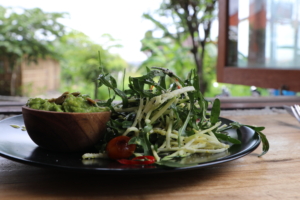
“A new study has shown for the first time how limonoids, natural compounds present in lemons and other citrus fruit, impede both ER+ and ER- breast cancer cell growth. This sheds new light on the importance of citrus fruit for breast cancer prevention and supports past studies which showed fruit consumption may lower breast cancer risk.”
All kinds of people are saying that the entire lemon should be used with nothing wasted. Not only for the obvious health benefits but also for the amazing taste!
How Simple, take an ORGANIC lemon, wash it, and then put it in the freezer. Once it is frozen you get whatever is necessary to grate or shred the whole lemon without even peeling it first.
Then sprinkle it on your salad, ice cream, soup, cereals, noodles, spaghetti sauce, or whatever. No holds barred. What you will experience is that whatever you sprinkle it on will take on a taste you may never have experienced before.
Why would I do this? Because the lemon peel contains 5 to 10 times more vitamins than the lemon juice itself and the peel is the part that is usually wasted. Not only that, but the peel helps to get rid of toxins in the body.
But wait, there’s more. Lemon is effective in killing cancer cells because it is allegedly 10,000 stronger than chemotherapy.
This has not been revealed because there are people out there that want to make a synthetic, toxic version that will bring them huge profits. Shades of Monsanto.
The good news is that the taste of lemon is pleasant and does not deliver the horrific effects of chemotherapy.
What’s bizarre is that people are closely guarding this fact so as to not jeopardize the income to those that profit from other’s illnesses.
Another interesting aspect of the lemon is that it has a remarkable effect on cysts and tumors. Some say the lemon is a proven remedy against all types of cancer.
It doesn’t end there. It has an anti-microbial effect against bacterial infections and fungi; it is effective against internal parasites and worms; it regulates blood pressure, which is too high; it acts as an anti-depressant; it combats stress and nervous disorders.
The source of this information, although not specifically named, is one of the largest drug manufacturers in the world. They further say that after more than 20 laboratory tests since 1970, the extracts revealed that it destroys the malignant cells in 12 cancers, including colon, breast, prostate, lung and pancreas and that the compounds of the lemon tree were 10,000 times more effective than the product Adriamycin, which is a drug normally used chemotherapeutically in the world to slow the growth of cancer cells.
Even more, this type of therapy with lemon extract only destroys malignant cancer cells and does not affect healthy cells.
The process is simple: buy an ORGANIC lemon, wash it, freeze it, grate it, and put it on everything you eat.
It’s not rocket science. God puts stuff on the planet to keep the body healthy. The corporations hide this information and create synthetics to treat disease. The synthetic chemical creates other symptoms from its ingestion requiring another drug to combat these symptoms.
And so the cycle continues, which equates to enormous profits coming from an overt intention to keep a body ill and suppressing natural healing foods, minerals and modalities, all withheld by the mainstream media to not jeopardize their advertising dollar income, and payoffs to the politicians to not pass laws that will greatly benefit the people.
If we do not take responsibility for ourselves and go against the mainstream grain, we will inevitably remain a “trick” our whole life.
Dairy-free probiotics are probiotic foods and supplements that do not contain milk or other products from cows or other livestock. Dairy-free probiotics are thus lactose-free. Many people around the world have an intolerance to lactose – the sugar in milk – and, according to a 2013 report, 75 percent of people with lactose-intolerance or milk allergies either reduce their dairy consumption or go dairy-free altogether as a way to manage symptoms.[1] Other people may want to avoid dairy for health reasons or because they live a vegan lifestyle, avoiding dairy, meat and animal products.
According to the NIH, 65% of people around the world – that’s 30 to 50 million people in the United States alone – have a hard time digesting lactose beyond infancy.[2, 3] Some people also have a true allergy to the proteins in milk, including the protein casein. While some people will use the terms allergy, sensitivity, and intolerance interchangeably, allergy and lactose intolerance are quite different. An allergy is when the body’s immune system sees a substance – milk protein in this case – as a foreign invader, or allergen, and then the body produces antibodies in response. The allergic reaction can range from mild — itching, red skin — to severe, causing an inability to breathe due to swelling in the throat, or even anaphylactic shock. Fortunately, there are far fewer milk allergies compared with lactose-intolerance – 2-3% of the population in the developed world, though that still makes it the most common food allergy among kids.
In contrast, people with lactose-intolerance do not produce adequate lactase, the enzyme that breaks down lactose, which is the sugar in milk. People who are lactose-intolerant experience different symptoms from people with a milk allergy. Lactose-intolerance causes digestive symptoms, including stomach pain, diarrhea, gas, and bloating.
Whether you have been formally diagnosed with lactose-intolerance or you follow a plant-based lifestyle, choosing dairy-free probiotic foods is an effective way to encourage a healthy balance of bacteria for overall gut health.
Your microbiota is made up of countless microbes, or microorganisms, that live in and on your body. Most of these microbes are found in the gastrointestinal tract, or gut, and consist of bacteria and yeast. Your body naturally contains a host of healthy bacteria that are part of its defenses that keep you healthy. Some bacteria, however, are harmful and lead to illness.
Many factors contribute to an imbalance of bacteria in the gut, including the use of antibiotics, food additives, diet, and genetics.Scientists are actively studying the many ways a person’s gut microbiota affects health, including mental health, immune system health, weight loss and metabolism, and reactions to seasonal allergies.Probiotics also:
If you’re considering buying a probiotic that is not specifically identified as dairy-free, make sure to scan the label. Although food-labeling has improved, when it comes to finding non-dairy probiotics and lactose-free probiotics, the word “dairy” isn’t always written on a product label. To make sure your probiotic doesn’t have dairy, avoid these ingredients:
If any of these ingredients are present, it’s best to walk away from the product. Probiotic supplements that include natural or artificial flavoring might also contain dairy and should be avoided.
When it comes to eating non-dairy foods rich in probiotics, there is an impressive list of dairy-free probiotic sources. If you are lactose intolerant or are following a dairy-free diet, you can still reap the benefits of probiotics by consuming dairy-free fermented foods or taking dairy-free probiotic supplements. These products can be found at your local store or ordered online. The following are a few sources of probiotics that don’t contain dairy.
Coconut milk yogurt is a delicious, dairy-free probiotic. This food can contain varying levels of sugar, so be sure to check the label. Avoid yogurt with too much sugar, or opt for an unsweetened version. Adding berries to coconut milk yogurt is a great way to enjoy the added benefits of a healthier and tastier meal. For a non-dairy yogurt that packs a big serving of probiotics, try this easy, do-it-yourself vegan probiotic yogurt recipe.
A lightly fermented drink, kefir contains up to 30 microorganism strains, which gives it a higher level of probiotics than yogurt. Although dairy Kefir exists, any milk can be used to create it, including coconut milk, almond milk, and others. Kefir and the associated probiotics have been shown to fight against harmful bacteria and Candida yeast, and normalize gut function.
Tempeh is made from cooked and fermented soybeans and has a firm texture and nutty flavor Not only is it dairy-free, but it’s also high in protein and calcium, and an excellent source of probiotics. It is used as a meat substitute in many types of dishes such as tacos, chili, or a vegetarian stir-fry. Some brands of tempeh are also a good source of gluten-free probiotics.
Kimchi, a spicy fermented cabbage, is a popular Korean side dish that’s dairy-free and rich in probiotics. This food also contains healthy servings of iron, folate, and vitamins A, C, K, and B6. A bit sour and a bit spicy at the same time, adding a scoop of Kimchi to meals will liven up almost any dish.
Sauerkraut is another version of fermented cabbage and is a great way to get non-dairy probiotics and digestive enzymes into your diet. Sauerkraut is also low in calories and a good source of fiber, manganese, folate, iron, potassium, and vitamins B6, C, and K.
Kombucha is a dairy-free probiotic drink in the form of black tea. This delicious beverage is fermented by a combination of bacteria and yeast and it contains several types of probiotics including Gluconacetobacter, Lactobacillus, Acetobacter, and Enterococcus faecium bacterial strains as well as probiotic yeasts like Zygosaccharomyces. Kombucha is a refreshing and healthy replacement for soda or carbonated beverages.
Miso is a traditional Japanese condiment made from either fermented rye, soybeans, rice, or barley. It is a lovely source of probiotics that includes Lactobacilli and Bifidobacteria. Commonly enjoyed as miso soup, it can also be used to make a delicious salad dressing.
Much like tempeh, natto is made of fermented soybeans and contains bacillus, a healthy bacteria. It’s also an excellent source of protein and provides several vitamins and minerals including iron, copper, magnesium, calcium, potassium, zinc, phosphorus, selenium, and vitamins C and K. Traditionally eaten as a breakfast food, natto can be consumed by itself, or it can be added it to virtually any dish.
Pickles are an excellent source of good-for-you probiotics, but not any pickle will do. In fact, most pickles you find on store shelves don’t make the cut because they are cooked and preserved in acidifying vinegar, which kills any probiotics. Look for brands that are labeled “naturally fermented,” or ferment them yourself at home.
Widely heralded in Japan for their healing and therapeutic properties, umeboshi plums – also called Japanese salty plums or ume plums – are a source of probiotics but are less known in the Western world. Famously used by Samurai warriors to provide strength for battle, the plums have an alkalizing effect on the body. The ume fruit is pickled in brine along with shiso leaf. You can buy these plums pickled, as an umeboshi paste, or even as umeboshi vinegar – which is actually not vinegar, but the brine the plums are pickled in.
Apple cider vinegar can contain probiotics, but make sure to buy unpasteurized, raw, organic varieties, which are made from fermented apple cider. The bottle will contain cobwebby strands called the mother or scoby, which is a symbiotic culture of bacteria and yeast. Raw apple cider vinegar is full of proteins, enzymes, and probiotics, including Mycoderma aceti, which ferments the apple cider into vinegar. These healthy probiotics permeate the liquid and are present in every tablespoon.
Getting probiotics from food is ideal. However, our diets are not always perfect, and stress and sleep disturbances can throw off the balance between good and bad bacteria in the gut. Taking a daily probiotic supplement can help boost your digestive health. Make sure to choose a trustworthy brand. Since ingredients, efficacy, and quality can vary, you should purchase probiotic supplements from a credible company with a history of excellent quality control. Verify that they use the purest, most natural ingredients. Keep the following tips in mind.
Some supplements contain one type of bacterial strain, while others contain several strains. Which is best? Research shows that some strains offer specific health benefits that others do not. Although there are plenty of excellent, single-strain probiotic supplements, a good rule of thumb is to choose a dairy-free probiotic with at least three strains.
Prebiotics are non-digestible “food” for probiotics that help probiotics grow and colonize in the gut. Prebiotics are found in non-dairy foods like onions, garlic, leeks, Jerusalem artichokes, and asparagus. As a bonus, some probiotic supplements also contain prebiotics.
Many probiotic supplements use gelatin capsules made with beef, pork, or both. Although it’s not a hard and fast rule, vegan supplements that are made with vegetarian capsules tend to be manufactured more carefully and are of a higher quality.
Many probiotic supplements contain different species of Lactobacillus, which is a type of healthy bacteria. Although Lactobacillus sounds a bit like lactose, it is dairy-free and does not contain lactose. Its name derives from the fact that it is often grown on a dairy medium, although all dairy is removed during processing. Lactobacillus actually occurs naturally in your gastrointestinal tract regardless of whether or not you consume products containing dairy. If you prefer a supplement that does not grow on a dairy medium, consider a vegan probiotic. I recommend Floratrex™, our vegan, non-dairy probiotic, which contains 50 billion CFU (colony-forming units) of over two dozen of the best probiotic strains, and it includes prebiotics for the perfect balance.
Results may vary. Information and statements made are for education purposes and are not intended to replace the advice of your doctor. Global Healing Center does not dispense medical advice, prescribe, or diagnose illness. The views and nutritional advice expressed by Global Healing Center are not intended to be a substitute for conventional medical service. If you have a severe medical condition or health concern, see your physician.
One of the most popular activated charcoal uses is for the safe and effective treatment of poisoning and drug overdoses. It’s used in emergency trauma centers across the world. In addition, it’s used to reduce bloating and gas, lower cholesterol, treat bile flow problems safely during pregnancy, and even prevent hangovers.
Research shows that activated charcoal works better than stomach pumping (gastric lavage) in some situations.
Activated charcoal works by trapping toxins and chemicals in its millions of tiny pores. Typically, however, it’s not used when petroleum, alcohol, lye, acids or other corrosive poisons are ingested.
It doesn’t absorb the toxins, however. Instead it works through the chemical process of adsorption. In the body, absorption is the reaction of elements, including nutrients, chemicals and toxins, soaked up and assimilated into the blood stream. Adsorption is the chemical reaction where elements bind to a surface.
The porous surface of activated charcoal has a negative electric charge that causes positive charged toxins and gas to bond with it. The nooks and crannies in activated charcoal are created through a heating process. It’s important to note that activated charcoal is not charcoal used in your barbecue grill! Barbecue charcoal is loaded with toxins and chemicals, and should never be consumed.
Whenever you take activated charcoal, it’s imperative to drink 12-16 glasses of water per day. Activated charcoal can cause dehydration if adequate amounts of water aren’t consumed in tandem. In addition, this helps to flush out the toxins quickly and prevents constipation experienced by some individuals.
In addition to being a safe and effective treatment for poisonings and the removal of toxins from the system, additional activated charcoal uses include deodorizing and disinfecting, and it’s an important step to cure Lyme disease. Here are the top 10 activated charcoal uses:
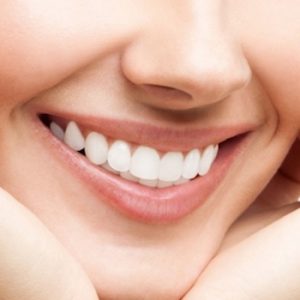 Have your teeth become stained from coffee, tea, wine or berries? Activated charcoal helps whiten teeth while promoting good oral health by changing the pH balance in the mouth, helping prevent cavities, bad breath and gum disease.
Have your teeth become stained from coffee, tea, wine or berries? Activated charcoal helps whiten teeth while promoting good oral health by changing the pH balance in the mouth, helping prevent cavities, bad breath and gum disease.
It works to whiten teeth by adsorbing plaque and microscopic tidbits that stain teeth. This activated charcoal use is cost-effective and an all-natural solution for a bright smile.
BE CAREFUL, it can (and will) stain grout and fabrics. Protect counters, floors and clothing before using.
To whiten your teeth naturally, wet a toothbrush and dip into powdered activated charcoal. Brush teeth as normal, paying special attention to areas showing the most staining. Sip a bit of water, swish through mouth thoroughly and spit. Rinse well, until spit is clear.
For best results, brush your teeth with activated charcoal two-three times per week.
Note: If you have crowns, caps or porcelain veneers, it’s possible that activated charcoal will stain them. In addition, if your teeth become sensitive, quit using it. <
One activated charcoal use often overlooked is to alleviate uncomfortable gas and bloating. It works by binding the gas-causing byproducts in foods that cause discomfort.
A study in the American Journal of Gastroenterology found that activated charcoal prevents intestinal gas following a typical gas-producing meal.(4)
Dosing recommendations to alleviate gas and bloating: Take 500 milligrams one hour prior to a typical gas-producing meal, with a full glass of water. Follow with an additional glass of water immediately thereafter to help get the charcoal into your system, where it can bind with gas-producing elements.
 While activated charcoal does not adsorb alcohol, it does help quickly remove other toxins from the body that contribute to poisoning. Alcohol is rarely consumed in its pure form; mixers that include artificial sweeteners and chemicals are common. Activated charcoal removes these toxins.
While activated charcoal does not adsorb alcohol, it does help quickly remove other toxins from the body that contribute to poisoning. Alcohol is rarely consumed in its pure form; mixers that include artificial sweeteners and chemicals are common. Activated charcoal removes these toxins.
In addition, when activated charcoal is taken at the same time as alcohol, some studies show it can significantly reduce blood alcohol concentrations
Princeton University’s First Aider’s Guide to Alcohol indicates that activated charcoal is administered in some situations related to alcohol. This includes if the individual is unconscious or showing signs of acute alcohol poisoning.<
Most people don’t think about mold living in their bodies, but it can. Toxic mold causes depression, kidney and liver failure, decreased brain function, heart disease, eye irritation, headaches, vomiting, impaired immune system function, and severe respiratory distress.
Homes that have flooded, or even those with small leaks under a sub-floor or in the walls, can create an environment where mold can thrive. Poor ventilation contributes to the problem, and bathrooms, basements and laundry rooms are particularly prone to mold growth.
If there is visible mold in your home, it must be mitigated properly. It’s important to wear gloves and a protective mask to keep from inhaling toxic mold during cleanup. Baking soda, apple cider vinegar, tea tree oil and borax can be used to clean mold off hard surfaces and keep mold from growing in the future.
If you or your family experience symptoms including wheezing, rashes, watery eyes, coughing or headaches that aren’t explained in other ways, your home should be evaluated for mold spore levels, even if no visible mold is detected. It can thrive behind drywall, under floors and in ventilation ducts.
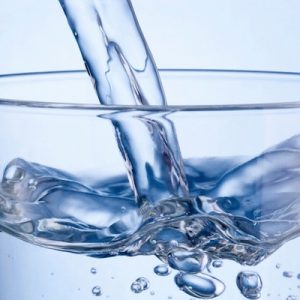 Activated charcoal traps impurities in water including solvents, pesticides, industrial waste and other chemicals. This is why it’s used in water filtration systems throughout the world. However, it doesn’t trap viruses, bacteria and hard-water minerals.
Activated charcoal traps impurities in water including solvents, pesticides, industrial waste and other chemicals. This is why it’s used in water filtration systems throughout the world. However, it doesn’t trap viruses, bacteria and hard-water minerals.
According to a study published in the Journal of the Canadian Dental Association, activated carbon filters (activated charcoal), removes some fluoride. (7) Avoiding fluoride and detoxing from it is important for oral health, proper immune system functioning, and healthy kidneys and liver.
Drinking water is essential to good health; however, typical tap water is toxic and laden with chemicals, toxins and fluoride. Ingestion should be limited whenever possible. Activated charcoal water filters are available for whole-home systems, as well as countertop models. Drink eight-10 glasses of pure water per day to help soothe the digestive tract, fight fatigue, keep organs operating, and provide lubrication for joints and tissues.
As mentioned above, one of the most common activated charcoal uses is to remove toxin and chemicals in the event of ingestion. Most organic compounds, pesticides, mercury, fertilizer and bleach bind to activated charcoal’s surface, allowing for quicker elimination, while preventing the absorption in the body.
Activated charcoal is also used in the event of an accidental, or purposeful, overdose of many pharmaceutical drugs and over-the-counter medications. It’s effective for aspirin, opium, cocaine, morphine and acetaminophen. It’s important that the proper amount is administered as quickly as possible — definitely within an hour of ingestion.
In the event of poisoning, call 911 immediately. Proper dosing is imperative. According to the University of Michigan Health System, 50 to 100 grams (not milligrams!) is used in cases of poisoning in adults and 10 to 25 grams for children.
In addition, activated charcoal can be used in cases of food poisoning when nausea and diarrhea are present. Adults take 25 grams at onset of symptoms or when food poisoning is suspected, and children should be given 10 grams. Increase dosage as necessary. Remember, it’s essential that adequate water is consumed when activated charcoal is taken. <
Activated charcoal uses extend beyond internal applications. For external treatments, it’s effective at treating body odor and acne and relieving discomfort from insect bites, rashes from poison ivy or poison oak, and snake bites.
After a mosquito bite or bee sting, mix one capsule of activated charcoal with ½ tablespoon of coconut oil, and dab on affected area. Reapply every 30 minutes until itching and discomfort are gone. As activated charcoal stains nearly everything it touches, wrap with a bandage.
To treat bites from snakes and spiders, including the Brown Recluse or Black Widow, you want to cover a larger area than just a small bandage, as the bacteria and viruses that lead to tissue damage need to be mitigated quickly.
Create a wrap out of fabric that’s big enough to go around the affected area twice. Dab the mixture of coconut oil and activated charcoal on the fabric, and wrap. Secure with bandages. Reapply every two to three hours, rinsing well between applications.
To treat acne, mix one capsule of activated charcoal with two teaspoons of aloe vera gel, and smooth over face. Let dry and rinse off completely. The activated charcoal binds with environmental toxins and dirt that contribute to acne. It’s also good for spot treatments.
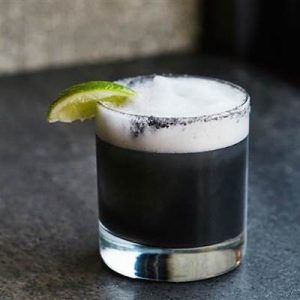 Activated charcoal uses help promote a healthy digestive tract by removing toxins that cause allergic reactions, oxidative damage and poor immune system function. By removing the toxins from your system, you can reduce joint pain, increase energy and increase mental function.
Activated charcoal uses help promote a healthy digestive tract by removing toxins that cause allergic reactions, oxidative damage and poor immune system function. By removing the toxins from your system, you can reduce joint pain, increase energy and increase mental function.
Environmental factors, including pesticides on food, chemicals in the water we drink and exposure to mold, create a toxic burden in our bodies. It’s important to routinely cleanse the digestive tract to support overall health and wellness. To complete a digestive cleanse with activated charcoal, take 10 grams 90 minutes prior to each meal, for two days.
During the cleanse, eat only organic fruits and vegetables, grass-fed meat, and wild fish. If during the cleanse you find you are constipated, this is a sure sign you’re not consuming enough water! Drink a glass of warm water with a slice of lemon and a touch of honey every half hour until constipation is relieved.<
Activated charcoal uses include helping prevent cellular damage to kidneys and liver, as well as supporting healthy adrenal glands. It’s imperative to cleanse toxins and chemicals routinely from the body. Activated charcoal benefits major organs by helping the body flush out the toxins and chemicals that cause the damage.
Aging is a natural part of life, but due to the toxic load we are exposed to through food, our homes and workplaces, and our environment, to prevent pre-mature aging we must get rid of them.
For this activated charcoal use, take two capsules per day after exposure to nonorganic foods, heavy metals or after contact to other toxins. This supports better cognitive function, a reduction in brain fog, healthier kidney and liver function, and a healthier digestive tract.
Studies around the world show that activated charcoal reduces bad cholesterol and increases good cholesterol as much as some prescription medications. In one study, total cholesterol decreased by 25 percent, LDL cholesterol decreased by 41 percent, while HDL increased by 8 percent — in just four weeks.(9)
Study participants took three doses of eight grams each for the period of the study. As mentioned below, don’t take activated charcoal within 90 minutes to two hours of taking any prescription medication or supplements as it can prevent proper absorption.
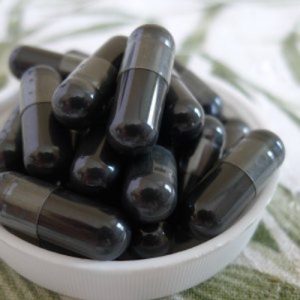 I recommend activated charcoal as a part of first aid kits, both at home and at work.(3) In the event of an emergency where toxins, drugs or chemicals are ingested, it’s imperative to call 911 immediately. If you have activated charcoal on hand, be sure to tell the operator; the operator may advise to administer it prior to the first responder’s arrival.
I recommend activated charcoal as a part of first aid kits, both at home and at work.(3) In the event of an emergency where toxins, drugs or chemicals are ingested, it’s imperative to call 911 immediately. If you have activated charcoal on hand, be sure to tell the operator; the operator may advise to administer it prior to the first responder’s arrival.
Depending on the amount of toxins or chemicals ingested and types of toxins, multiple doses may be required. At the hospital, physicians are able to administer more as needed.
For the activated charcoal uses mentioned here, it’s generally deemed safe for most individuals. However, it’s always good to be aware of any medical conditions such as intestinal bleeding or blockages, holes in the intestines, chronic dehydration, slow digestion, or a recent abdominal surgery, as they may affect how activated charcoal reacts in your body.(10)
Additionally, activated charcoal can interfere with the absorption of nutrients, supplements and interfere with prescription medications. Take activated charcoal 90 minutes to two hours prior to meals, supplements and prescription medications. Potential adverse interactions with the following drugs can occur:(11)